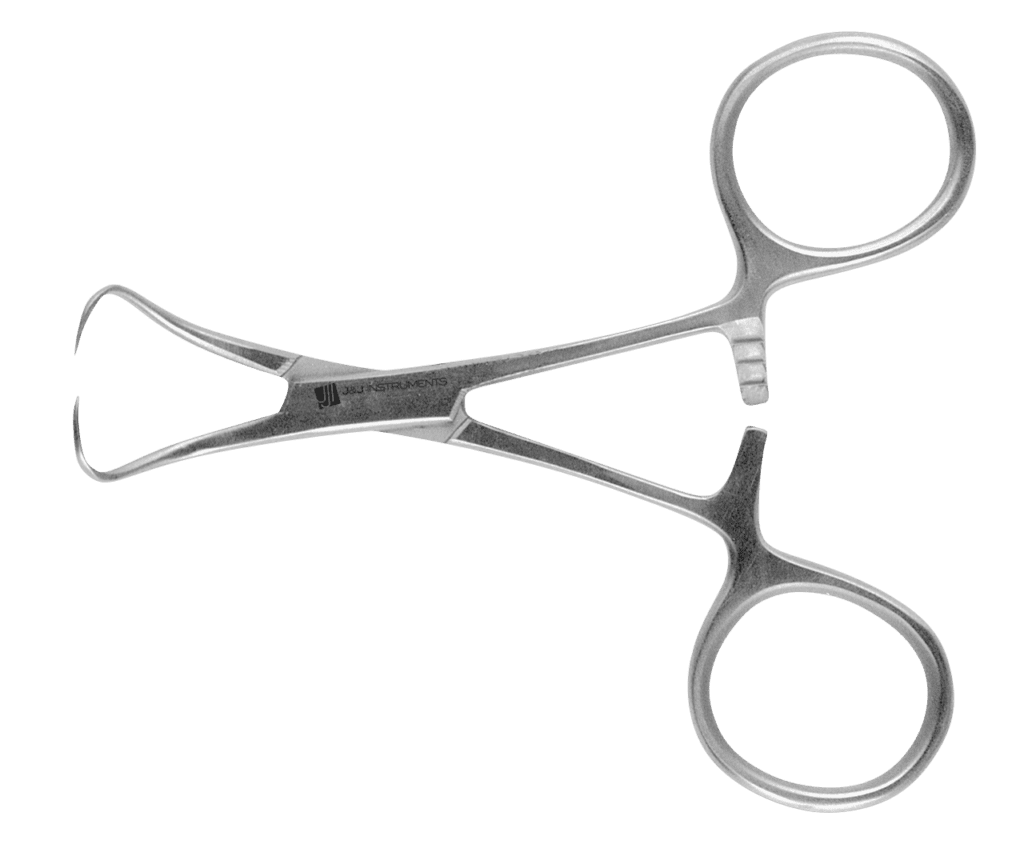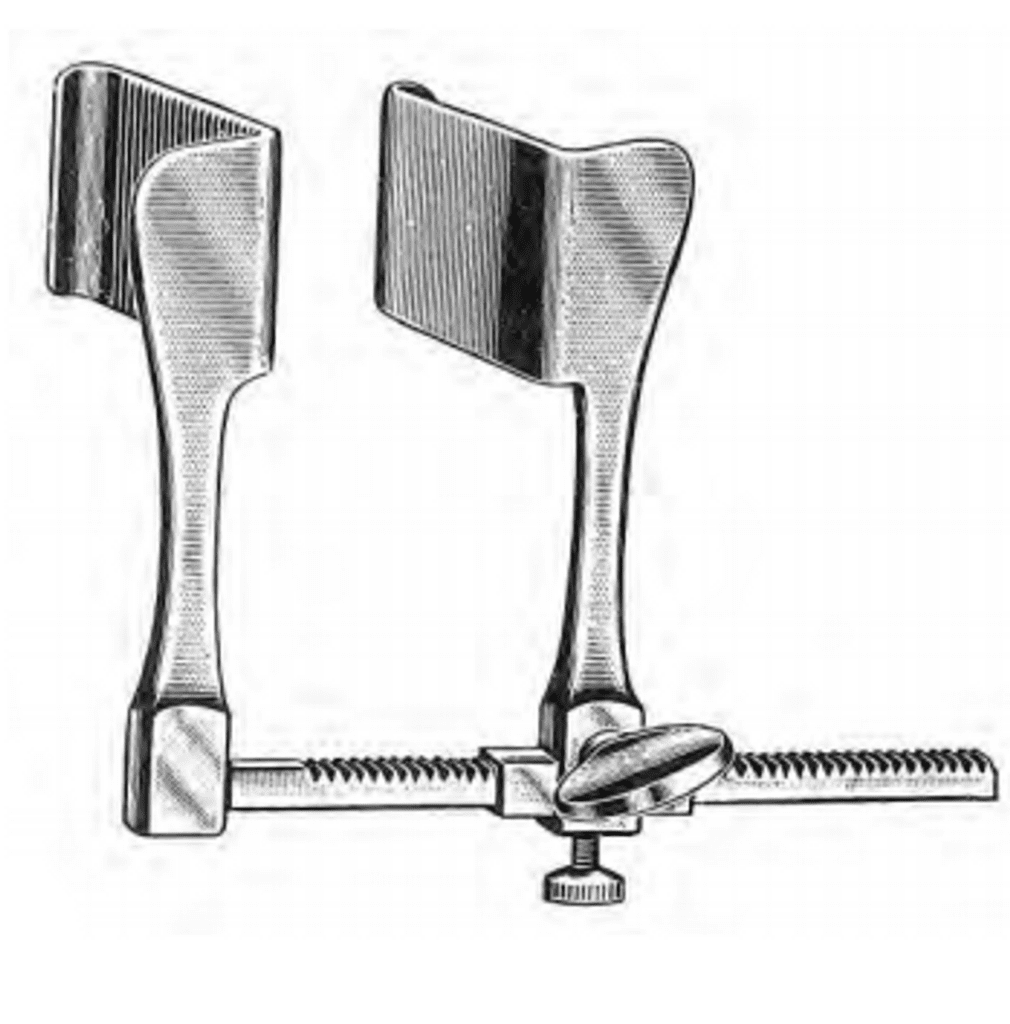- April 19, 2023
- Posted by: American Surgical
- Categories: Blog, Neurosurgery


A-E
Jump to Your Favorites
Medical forceps have a long and fascinating history that dates back thousands of years. Forceps were first used by ancient Egyptian physicians to extract teeth and remove debris from wounds. The Greeks and Romans also used forceps for various surgical procedures, and they were commonly used during the Middle Ages for a range of medical purposes.
The design of forceps continued to evolve throughout the centuries, with significant advances occurring during the Renaissance. The Italian physician and surgeon, Giovanni Battista Cortesi, is credited with inventing the first obstetric forceps in the 16th century. These forceps were designed to assist in difficult childbirths, and they were soon widely adopted throughout Europe.
In the 18th and 19th centuries, forceps continued to be refined and improved. During the 20th century, advances in materials and manufacturing technology allowed for the development of more specialized and precise forceps. Today, there are countless types of forceps available for a wide range of medical procedures, from simple dressing forceps to highly specialized instruments, such as bipolar forceps used in neurosurgery and other complex procedures. Forceps remain an important and effective tool in modern medicine.

Adson-Brown forceps: used in surgery and wound care for grasping and manipulating delicate tissue, such as in plastic surgery or microsurgery.
Adson forceps: used in surgery and wound care to grasp and manipulate delicate tissues, such as in plastic surgery or microsurgery.
Alligator forceps: long and slender forceps with serrated jaws, used for reaching and extracting foreign objects from deep cavities or narrow spaces.

Alligator jaw forceps: used in surgery for grasping and holding tissue or objects, similar to Alligator forceps.
Allis forceps: used in surgery for grasping and manipulating tissue, such as during wound closure or to hold skin edges during skin grafting.
Angled Cilia Forceps: These forceps have an angled design that provides a better view of the area being worked on.
Argon plasma coagulation forceps: Argon plasma coagulation forceps use a high-frequency electrical current and ionized gas to coagulate tissue. They are often used to treat bleeding or to ablate abnormal tissue in the gastrointestinal tract bleeding or remove abnormal tissue.

Babcock forceps: used in surgery for grasping and holding delicate tissues, such as intestines or fallopian tubes.
Babcock-Gardner forceps: similar to Babcock forceps, but with a locking mechanism that allows them to hold tissue in place.

Backhaus towel forceps: used in surgery for securing surgical drapes or towels to the patient’s skin.
Barraquer Cilia Forceps: named after Dr. Jose Barraquer, these forceps have a unique design with a curved, pointed tip and a slightly serrated edge that allows for a more secure grip on fine hairs or tissues commonly used in eyelash and eyelid surgery.
Bayonet Bonney forceps: used in surgical procedures such as orthopedic surgery, particularly during bone and joint surgeries. They have a curved, angled design with a sharp tip that is used for grasping and holding tough or fibrous tissue during surgery.

Bayonet forceps: used in endoscopy to reach and grasp objects in tight spaces, such as in the gastrointestinal tract or airway.
Bergh cilia forceps: used in corneal surgery for grasping delicate tissues such as the cornea, they have a rectangular, straight design with delicate tips that are slightly angled.
Biopsy forceps: used for taking tissue samples, such as in endoscopy or during surgery.
Bipolar forceps: used in delicate surgical procedures, such as ophthalmic, neurologic, or ENT (ear, nose, and throat) procedures, to cut, coagulate, or seal tissue and blood vessels, and are often used in conjunction with other surgical instruments.
Bishop-Harmon forceps: used in obstetrics for grasping and holding the baby’s head during delivery.
Blakesley forceps: used in surgery for grasping and holding tissue during dissection or suturing.
Bone forceps: specialized forceps used in orthopedic surgery to cut and manipulate bones.
Bone reduction forceps: used to manipulate and grip bone fragments during the reduction of a fracture.

Bonney forceps: used in dentistry for grasping and extracting teeth, similar to dental forceps.
Bonney’s blue forceps: used in surgery for grasping and holding tissue during dissection or suturing.
Bozeman forceps: used in gynecology for grasping and holding tissue during surgery.
Brown-Adson forceps: another type of forceps used in surgery and wound care, similar to Adson-Brown forceps.

Caldwell-Luc forceps: used in otolaryngology for removing bone tissue from the nose or sinuses.
Caliper forceps: used in dentistry for measuring and marking teeth.
Capillary forceps: used in science and industry for handling small objects, such as microchips or delicate electronic components.

Carmalt forceps: used in veterinary surgery to clamp and control bleeding.
Carrel forceps: used in surgery for grasping and holding blood vessels or tissue.
Carter-Thomason fascial closure forceps: used in surgery for closing surgical incisions in the fascia layer.
Castroviejo needle holder forceps: used in ophthalmology for holding and manipulating surgical needles during suturing.
Cilia forceps: used in ophthalmology for removing eyelashes or other foreign bodies from the eye.
Colibri forceps: used in ophthalmology for grasping and manipulating delicate eye tissue.
Cooley forceps: used in surgery for grasping and holding tissue or organs during a procedure.

Cryoablation surgical forceps: These instruments use extreme cold temperatures to freeze and destroy abnormal tissue. They are often used in dermatologic and gynecologic surgery.
Curved Cilia Forceps: These forceps have curved tips that allow for better access to hard-to-reach areas, such as the inner corners of the eye.
Cushing forceps: used in neurosurgery for grasping and manipulating delicate brain tissue.
Cusco’s self-retaining bivalve vaginal speculum forceps: used in gynecology for examining the vagina and cervix.

Debakey forceps: used in cardiac and vascular surgery for grasping and manipulating delicate tissue, such as in aortic surgeries.
Debakey thoracic forceps: used in cardiothoracic surgery for grasping and manipulating delicate tissue, such as in aortic surgeries.

Delicate tissue forceps: used in surgery and other medical procedures for handling delicate tissues, such as nerves or blood vessels.
Dental forceps: used in dentistry for grasping and extracting teeth.
Desmarres chalazion forceps: used in ophthalmology for removing a chalazion, which is a type of eyelid cyst.
Doyen intestinal forceps: used in intestinal surgery for grasping and holding the intestine.
Dressing forceps: used to handle and place sterile dressings on wounds.
Duckbill forceps: used in gynecology for grasping and holding tissue during surgery.
Duval forceps: used in obstetrics to deliver the baby’s head during breech deliveries.

Electrocautery forceps: Electrocautery forceps use a high-frequency electrical current to cut and coagulate tissue. They are often used in surgery to control bleeding or to remove abnormal tissue.
Endocervical forceps: used in gynecology for obtaining tissue samples from the cervix.
Entomological forceps: used in entomology for handling insects.
Eye forceps: delicate forceps used in ophthalmology to handle delicate eye tissues and sutures.
F-J

Foerster sponge forceps: used in surgery to hold and manipulate surgical sponges.
Fomon nasal speculum forceps: used in otolaryngology to examine and treat the nasal passages.
Fomon nasal suction forceps: used in otolaryngology for suctioning mucus or other fluids from the nasal passages.

Fomon-Nelson tonsil forceps: used in otolaryngology for removing tonsil tissue.

Gelpi retractor forceps: used in surgery for retracting tissue or organs during a procedure.
Gillies skin hook forceps: used in surgery for retracting skin during a procedure.
Graefe iris forceps: used in ophthalmology for grasping and manipulating delicate iris tissue.

Halsey needle holder forceps: used in surgery for holding and manipulating surgical needles during suturing.
Halsted mosquito forceps: used in surgery for clamping and holding blood vessels or tissue.
Harmonic scalpel forceps: These are a type of ultrasonic energy-based instrument that use high-frequency vibrations to cut and coagulate tissue. They are often used in laparoscopic and robotic surgery and are designed to minimize bleeding and tissue trauma.

Hartmann Alligator forceps: similar to regular Alligator forceps, but with a locking mechanism that allows them to stay clamped on objects for longer periods of time.
Hartmann ear forceps: used in otolaryngology for removing foreign objects or cerumen from the ear canal.
Hartmann forceps: used in gynecology for grasping and manipulating the cervix during procedures such as cervical conization.
Heaney clamp forceps: used in gynecology for grasping and holding tissue during surgery.

Heavy-Duty Bonney Forceps: commonly used in orthopedic or trauma surgery for grasping and holding bone fragments or other hard tissues.
Hegar dilator forceps: used in gynecology for dilating the cervix during a procedure.
Hemostatic forceps: used to clamp blood vessels and control bleeding during surgery.
Hook probe forceps: used in dentistry for removing debris from teeth or performing root canal procedures.

Jansen’s ovarian forceps: used in gynecology for grasping and manipulating ovarian tissue during surgery.
K-O

Kelly forceps: used in surgery and wound care for clamping and grasping tissue during dissection, suturing or dressing changes.
Kevorkian biopsy forceps: used in gastroenterology for obtaining tissue samples from the digestive tract.
Kirschner wire forceps: used in orthopedic surgery to insert and manipulate Kirschner wires, which are used to stabilize bone fractures.
Kocher forceps: used in surgery and wound care to clamp and grasp tissue, such as in dressing changes or to grasp blood vessels.

Laser forceps: Laser forceps use laser energy to cut and coagulate tissue. They are often used in ophthalmic, dermatologic, and cosmetic surgery to minimize bleeding and tissue trauma.
Leksell rongeur forceps: used in neurosurgery for removing bone tissue.
LigaSure forceps: These are a type of bipolar forceps that use radiofrequency energy to seal blood vessels and tissue. They are often used in laparoscopic surgery and are designed to minimize bleeding and tissue trauma.
Lorna forceps: used in veterinary surgery to hold and manipulate tissue, such as during spaying or neutering procedures.
Luer forceps: used in medical procedures for grasping and manipulating small items, such as in laboratory work or during intravenous therapy.


Magill forceps: used in anesthesiology and emergency medicine for placing and manipulating endotracheal tubes during intubation.
Magpie forceps: used in obstetrics to grip and deliver the baby’s head during difficult deliveries, such as those involving forceps delivery.
McIndoe forceps: used in plastic surgery for holding and manipulating skin flaps.
McPherson forceps: used in surgery for grasping and holding delicate tissue or organs during a procedure.
Micro Cilia Forceps: These forceps are specifically designed for microsurgery, with very fine tips that allow for precision and control in delicate procedures.
Microsurgical forceps: specialized forceps used in microsurgery for delicate and precise procedure
Microwave forceps: Microwave forceps use microwave energy to cut and coagulate tissue. They are often used in surgery to minimize bleeding and tissue trauma.
Monopolar forceps: Similar to bipolar forceps, monopolar forceps are used to cut and coagulate tissue. However, they have only one electrode, so a separate grounding pad is needed to complete the circuit and prevent harm to the patient.
Mosquito forceps: used in surgery and wound care to clamp small blood vessels or to hold delicate tissue, such as in plastic surgery or microsurgery. (AKA O’Shaughnessy forceps)

Noyes forceps: used in gynecology for grasping and manipulating tissue during procedures such as colposcopy.

Obstetric forceps: used during childbirth to assist in the delivery of the baby.
Ochsner forceps: used in surgery for grasping and holding delicate tissue or organs during a procedure.
O’Connor-O’Sullivan forceps: used in surgery for grasping and holding tissue or objects.
P-T

Pean forceps: used in surgery and wound care to clamp and hold tissue or vessels, such as in vascular surgery or to control bleeding.

Plain Cilia Forceps: These are straight forceps with fine tips that are used to grasp fine hairs or delicate tissues.
Plasma kinetic forceps: Plasma kinetic forceps use plasma energy to cut and coagulate tissue. They are often used in minimally invasive surgery to minimize bleeding and tissue trauma.
Potts-Smith forceps: used in otolaryngology for grasping and manipulating tissue in the throat.

Radiofrequency surgical forceps: These instruments use radiofrequency energy to heat and destroy tissue. They are often used in dermatologic and cosmetic surgery.

Rat-tooth forceps: used in dentistry for extracting teeth with multi-rooted or curved roots. It has teeth-like projections on the tips of the forceps.
Rochester-Carmalt forceps: used in veterinary surgery to clamp and control bleeding, especially in larger animals.
Russian tissue forceps: used in surgery for grasping and holding tissue or organs, with serrated tips on the jaws. Similar to Adson forceps.

Schubert tonsil forceps: used in otolaryngology for removing tonsil tissue.
Senn retractor forceps: used in surgery for holding and retracting tissue, particularly in plastic surgery and other cosmetic procedures.
Septum Forceps: used in rhinoplasty and septoplasty to manipulate and reposition the nasal septum.
Serrated Cilia Forceps: These forceps have small serrations on the tips that provide a better grip on fine hairs or tissues.
Sigmoid anastomosis forceps: used in obstetrics to grip and maneuver the baby’s head during delivery.
Sims uterine sound forceps: used in gynecology for measuring the length and depth of the uterus.

Spencer stitch scissors forceps: used in surgery for cutting and removing sutures.
Spencer Wells forceps: used in surgery and wound care to clamp and hold tissue or vessels, such as in vascular surgery or to control bleeding.
Sponge forceps: used to handle and place surgical sponges during procedures.
Steinmann pin forceps: used in orthopedic surgery for manipulating Steinmann pins, which are used to stabilize bone fractures.
Stille bone forceps: used in orthopedic surgery for grasping and holding bone tissue.
Straight forceps: used in a variety of medical procedures for grasping and holding tissue or objects.
Strumpel-Lusk nasal forceps: used in ENT surgery, they are designed to help remove excess fluids, blood, or other materials from the nasal cavity during surgical procedures.
Surgical forceps: used in surgery for grasping, holding, and manipulating tissues, organs, and other surgical instruments.

Tenaculum forceps: used in gynecology for grasping and manipulating the cervix during procedures such as colposcopy or cervical biopsies.

Thomas splinter forceps: used in orthopedic surgery for grasping and removing splinters or foreign objects from the body.
Tischler biopsy forceps: used in gynecology for obtaining tissue samples from the cervix or uterus.
Tonsil forceps: used in ear, nose, and throat (ENT) procedures to grasp and remove tonsil tissue.

Towel clamp forceps: used in surgery for securing surgical drapes or towels to the patient’s skin.
Tuffier rib spreader forceps: used in surgery for spreading the ribs to access the thoracic cavity.
Tying forceps: used in surgery for tying sutures or ligatures (AKA MacPherson forceps).
U-Z

Ultrasonic surgical forceps: These instruments use high-frequency sound waves to cut and coagulate tissue. They are often used in neurosurgery, plastic surgery, and orthopedic surgery.
Uterine dressing forceps: used in gynecology for inserting and removing surgical dressings or sponges from the uterus.
Uterine forceps: used in gynecology to clamp and grasp the uterus during procedures such as hysterectomies or myomectomies.
Utrata forceps: used in ophthalmology for grasping and manipulating delicate eye tissue.

Van Buren urethral sounds forceps: used in urology for examining and dilating the urethra.
Vogt iris forceps: used in ophthalmology for manipulating and grasping delicate eye tissue, such as the iris.

Walther nasal forceps: used in otolaryngology for removing nasal polyps or other obstructions from the nasal passages.
Wartenberg pinwheel forceps: used in neurology for testing sensation in the skin.

Webster needle holder forceps: used in surgery for holding and manipulating surgical needles during suturing.
Wells forceps: used in obstetrics for grasping and holding the baby’s head during delivery.
Wright needle holder forceps: used in surgery for holding and manipulating surgical needles during suturing.

YAG (Yttrium-Aluminum-Garnet crystal) laser forceps: designed for use with YAG laser systems and are often used in procedures such as ophthalmology and vascular surgery.

Yankauer suction tip forceps: used in surgery for removing blood and other fluids from surgical sites.
Yellofin stirrup forceps: used in orthopedics and gynecology for holding a patient’s leg or foot in place during surgery.
Young tongue forceps: used in otolaryngology for grasping and manipulating the tongue during oral examinations or procedures.

Zaufal tonsil forceps: used in otolaryngology for removing tonsil tissue.
Zoellner suction tube forceps: used in ophthalmology for suctioning fluid from the eye during surgery.
See any we missed? Tell us in the comments below. Thanks for reading.
Leave a Reply
You must be logged in to post a comment.
